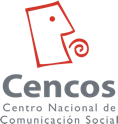Methodology
Theory: media pluralism as key for democratic societies
Media pluralism, meaning media that is free, independent, diverse, able to reflect diverging points of view and which allows criticism of those in power, is a key characteristic of a democratic society.
There are generally two forms of media pluralism: that which is internal to media and that which is external. Internal pluralism refers to the way in which social and political diversity is reflected in media content (for example, the representation of different cultural groups and differing political opinions or ideologies). External pluralism on the other hand, refers to the number of proprietors and the structure of their operations. This is also known as supplier plurality.
Concentration in the media market runs contrary to media pluralism and is a risk to diversity of ideas. Concentration includes:
- Media ownership concentration: when just a few players exercise a dominant influence in public opinion and raise barriers to the entry of other players and perspectives;
- Media content concentration: when the media content is uniform and is focused only on certain issues, people, ideas and opinions;
- Audience concentration: when the audience only reads, sees or hears particular media.
Goal: creating media ownership transparency
Media pluralism covers many dimensions and faces a number of challenges, however MOM focuses specifically on external pluralism. Most particularly, it focuses on the threat of concentration of ownership.
Lack of transparency is the greatest obstacle in the fight against concentration. How can people assess the reliability of information if they do not know who is providing it? How can journalists do their job well if they do not know who controls the company for which they work? And how can authorities regulate excessive media concentration if they they do not know who is behind the running of the media.
MOM has three ways of addressing its objective of increasing transparency and responding to the question: Who controls media content?
- Reporting ownership of the country’s most important media in the various sectors (television, radio, Internet, print) and their affiliates;
- Analyzing the potential influence of audience concentration in the formation of public opinion;
- Raising issues of ownership and media concentration, as well as the implementation of regulatory safeguards.
Means: data collection and fieldwork
Using standardized methodology, MOM has developed a mapping tool that generates a publicly available database detailing the proprietors of the largest media. This information will be continually updated.
The project also provides the particular context of each country and an analysis of its market and its legal environment.
Local research teams undertake the data collection in collaboration with and under the supervision of Reporters Without Borders. In the case of Mexico, the project works with the National Center for Social Communication (Cencos), a non-profit organization which works to promote and disseminate human rights, the right to freedom of expression and access to information.
Official information sources or sources with a high degree of reliability and trustworthiness have been used. Information was sought directly from media companies, political representatives and research institutes. All sources have been well documented and recorded.
Instrument: MOM-user guide
The researchers undertook data gathering using a detailed guide with the following sections:
. Section A “Context” This section provides a initial overview of the media market and contextual information, such as the regulatory framework for property rights, country information and media-specific data. It makes the results presented in the subsequent sections more comprehensible and puts into context the risks which are assessed for media plurality.
. Section B “The Media Market” This section specifies the types of media relevant to the formation of public opinion, from the television, radio, newspaper, magazine and Internet sectors. The selection is based on audience share.
. Section C “Ownership” This section researches the owners, shareholders and persons of influence for the Top 10 of each media sector. It identifies the income for the major companies, as well as the characteristics of the ownership arrangements.
. Section D “Indicators” This section explains the indicators which allow the calculation of a pluralism risk index for media ownership concentration.
The methodology included use of other pre-existing research about media ownership and pluralism. In particular the indicators are based on the Media Pluralism Monitor funded by the EU Center for Media Pluralism and Media Freedom (CMPF) at the European University Institute (EUI, Florence).


